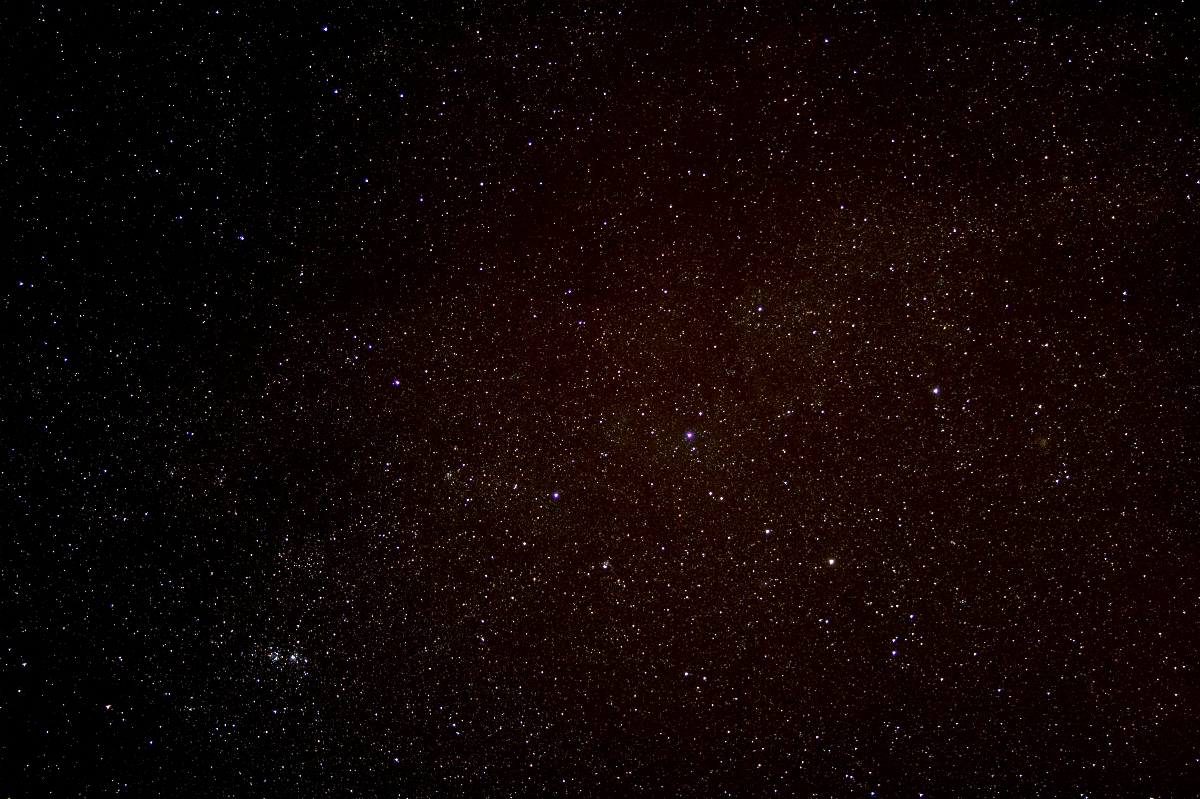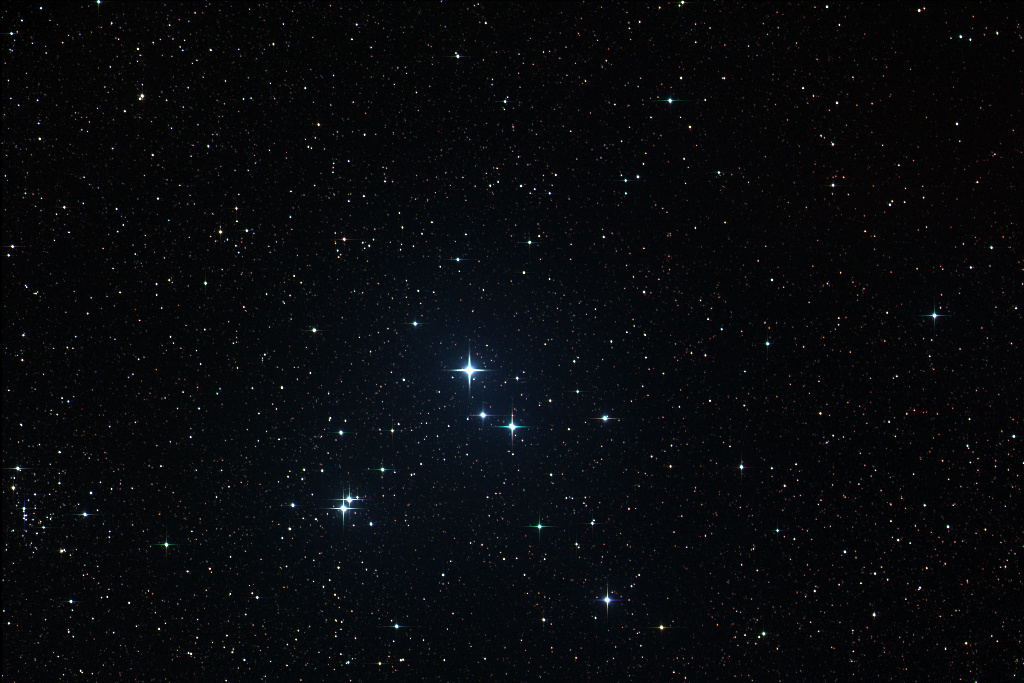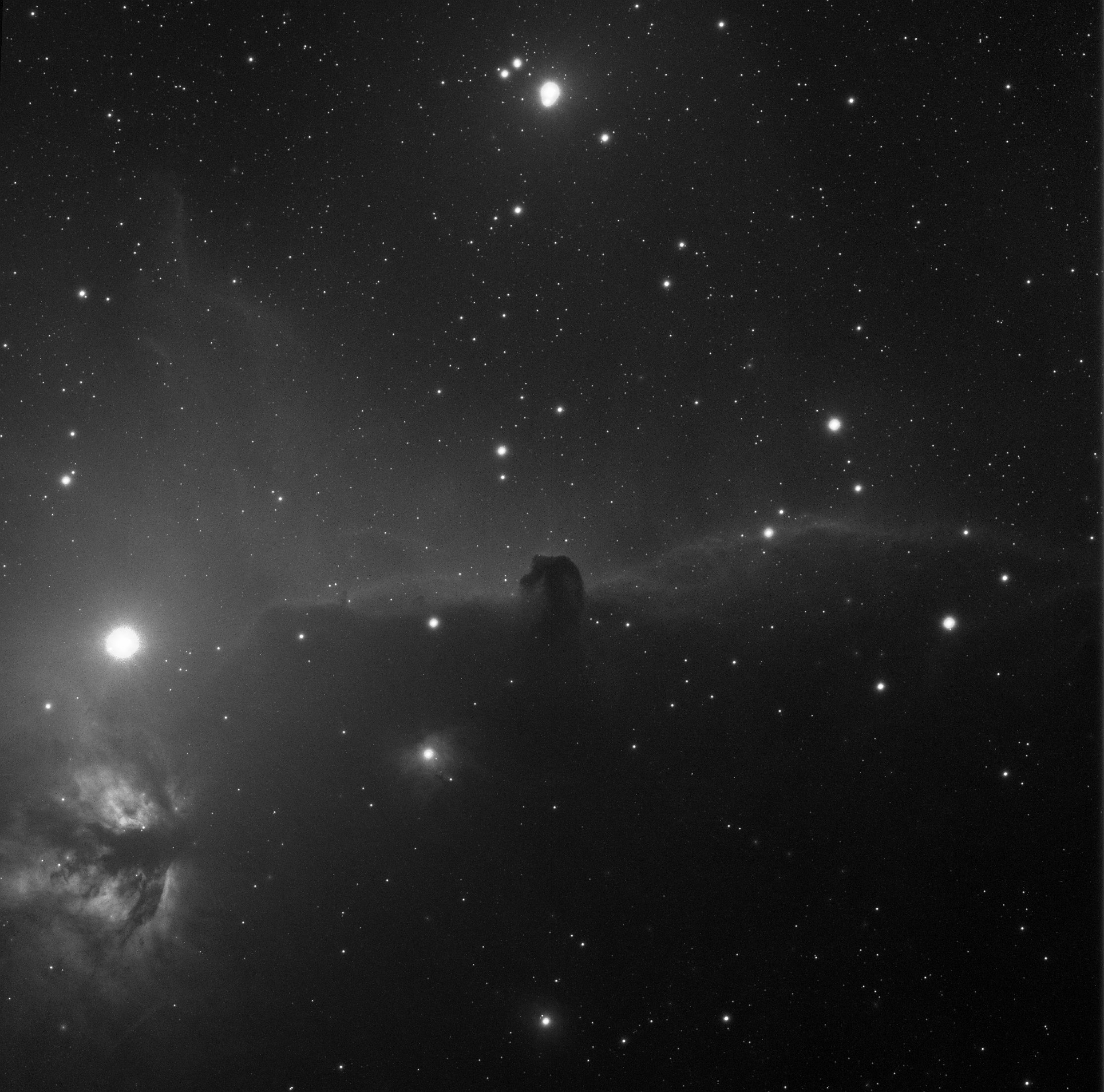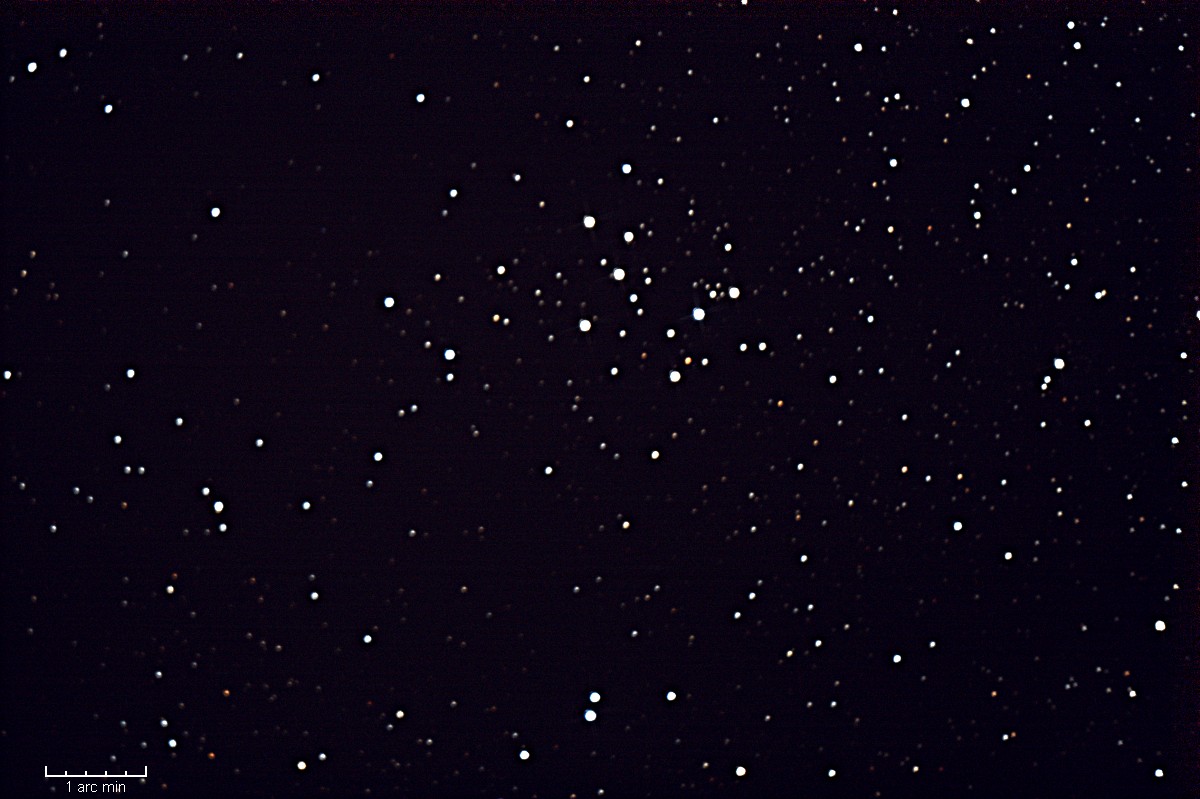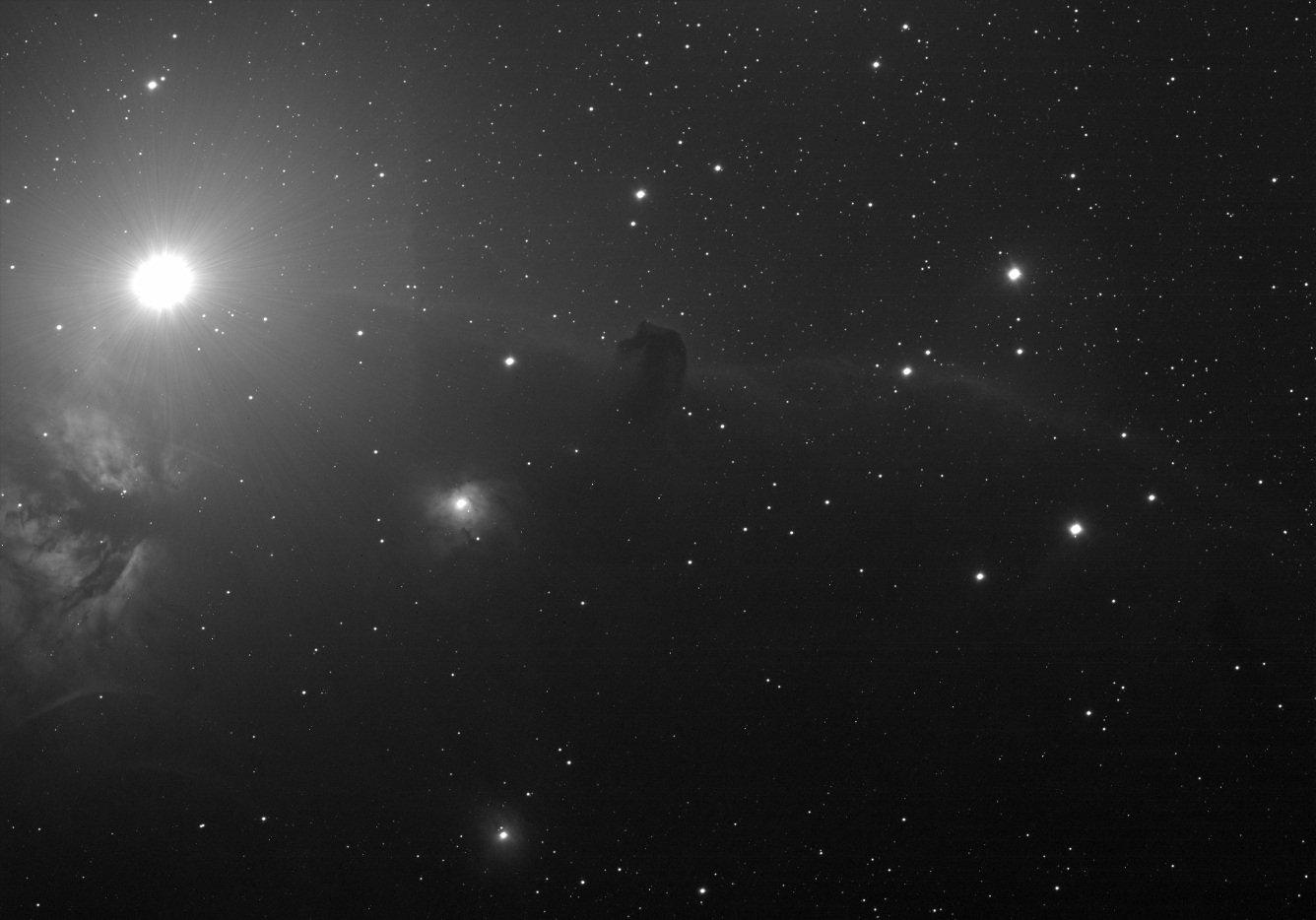p>Whilst spending the weekend with my Dad, we stopped off at Astronomia in Dorking, Surrey. There on the shelf was a Williams Optics 70mm Zenithstar. I’ve been looking for something small and light to replace the Canon zoom lenses on the AstroTrac and this fitted the bill exactly. Having parted with some money, I took it home and contrary to known astronomical principles, the following night was clear!
First target, M51. This being a first attempt I wasn’t too sure what to expect at the longer focal length and the tracking wasn’t perfect so I finished the run with just 5 images of 3 minutes each. With the Canon 350D attached, the 420mm focal length yields 3.14″/pixel.

